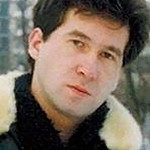Carland Creek on the border of Cooloola National Park in South East Queensland, Australia
15th place in Biotope Aquarium Design Contest 2018
![]() Australia. Jason Sulda
Australia. Jason Sulda

Volume: 235 L
Dimensions: 90x58x58 cm
List of fishes: Pseudomugil mellis, Rhadinocentrus ornatus
List of plants: Lepironia articulata, Baumea rubiginosa, Pycreus polystachyos, Azolla pinnata, Schoenoplectus mucronatus, Ludwigia peploides
Description of decorations: Plants where potted in a clay base surrounded by washed beach sand same as what would
be found in the heathland, the wood on the bottom is Allocasuarina littoralis root, and the branches are Melaleuca sieberi, leaf litter and pods of allocaurina littoralis, Melaleuca sieberi, Banksia spinulosa, Melaleuca pachyphylla.
Description of equipment: Aqua One 20 watt Tropical and Aqua One 25 watt Sunlight fluorescent lights, Eheim Classic 250 – 2213 Canister Filter , Aqua One Heater 100W.
Water parameters: Water temperature is 24°C, PH 6.0, GH 10.
INFORMATION ABOUT BIOTOPE
Description of the area surrounding the biotope: Carland Creek is a small creek that runs through coastal heathland or (Wallum) on the border of Cooloola National Park in South East Queensland Australia, the creek starts off as swampland and continues for about 5kms to Tin Can Bay, the National park has several pristine creeks and most of the habitat are similar such as Searys Creek, Snapper Creek, Teewah Creek. The water in the creek can range from heavily tannin to crystal clear depending on the rainfall and the seasons there isn’t much in terms of aquatic plants other than sedges probably because these creeks are isolated from other major drainages and the water quality can be acidic with mainly rotting vegetation.
Description of the underwater landscape of the biotope: The substrate in these creeks consists of mainly fine white sand but as you go further inland there can be some rock mainly sandstone, as it flows through open swamps there is just rotting vegetation and sedges but as it passes though heathland there are fallen branches and tree roots.
Description of the parameters of the habitat: Low pH (4.4 to 6.8), and very low dissolved mineral salts. Water hardness of 10 mg/L CaCO3, pH 5.8, and conductivity 170 μS/cm, temperature from 11°C in winter to 38°C in summer.
List of fishes and invertebrates occurring in the nature biotope: Rhadinocentrus ornatus, Pseudomugil mellis, Tandanus tandanus, Anguilla reinhardtii, Nannoperca oxleyana, Gobiomorphus australis, Ambassis marianus, Ambassis agassizii, Melanotaenia duboulayi, Glossamia aprion, Philypnodon grandiceps, Hypseleotris galii, Tenuibranchiurus glypticus.
List of plants found in the nature biotope: Lepironia articulata, baumea rubiginosa, cyperus polystachyos, Azolla pinnata, Schoenoplectus mucronatus, ludwigia peploides, Utricularia gibba, Baumea articulate, Baumea gunnii, Baumea juncea, Baumea rubiginosa, Carex pumila, Cyperus difformis, Fimbristylis dichotoma, Isolepis inundata.
Threats to the ecology: Large areas of these species coastal habitat have been cleared for residential development, forestry and agriculture. It is also likely that the introduced mosquito fish Gambusia holbrooki could compete with them for resources. The mosquito fish is more likely to be found where the habitat has been disturbed, these fish are now segmented to small pockets of habitat and could be lost, Pseudomugil mellis is listed as venerable and is protected in Queensland and can’t be sold in the aquarium hobby in Queensland, they are kept by a few people and are given to each other to try and keep some populations in the hobby, mainly ANGFA members.
Sources of information:
https://www.angfa.org.au/queensland.html
http://www.guntherschmida.com.au
https://www.ehp.qld.gov.au/wildlife/threatened-species/vulnerable/vulnerable_animals.html
https://wetlandinfo.ehp.qld.gov.au/wetlands/facts-maps/wildlife/?AreaID=national-park-great-sandy
Comments of the members of the jury of Biotope Aquarium Design Contest 2018

Of all the entries recreating the biotopes of Australia, I liked this one most of all. Here everything is arranged correctly: driftwood, covered with algae, properly planted plants and organic matter at the bottom. And there is no wonder. After all, the author himself is from Australia and can study the biotopes of this wonderful continent.

Design that gives a sense of naturalness. The use of driftwood covered with algae and detritus helps a lot. Perhaps with a slight rearrangement of the elements in different distances we would have a feeling of more depth. In general is is a good work, congratulations!

I like this tank. Good detail in all parts of the tank. Very interesting biotope, nice fish, nice everything. I immediate fealt the Australian atmosphere in this tank. Really good job! Keep on biotoping!
